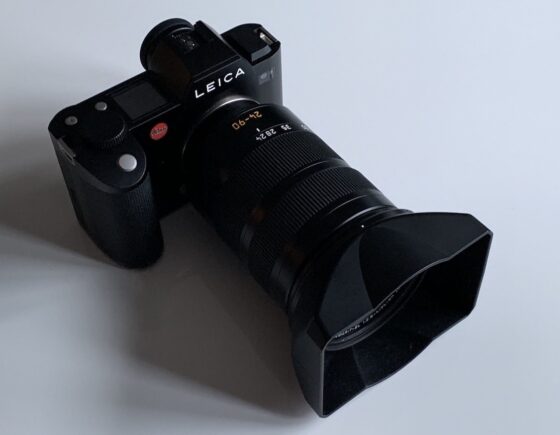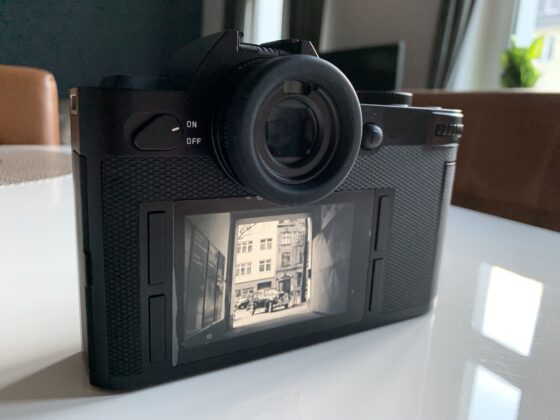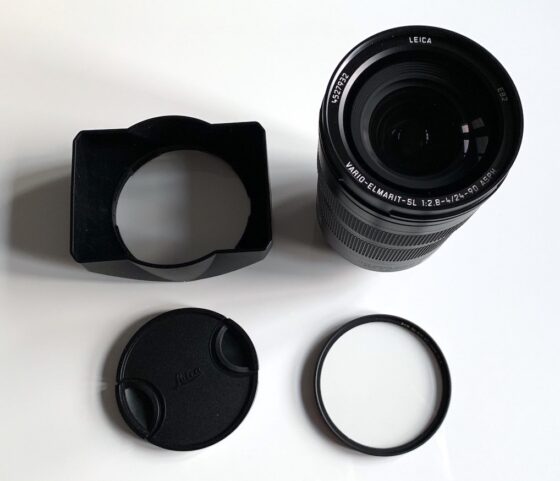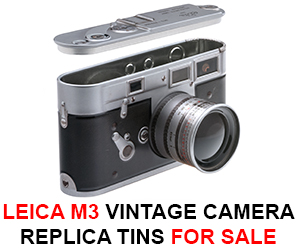


My experience of using the Leica SL (Typ 601) in 2020 by Moritz Philip Recke (website | Facebook | Instagram):
As in late 2019, Leica introduced its successor – the Leica SL2 – with some significant but two folded improvements (5-axis image stabilization, higher resolution of 47 megapixels, up to 5.5EV of compensation, improved viewfinder, improved grip, USB Type C connector, etc.), I thought it was time to write up my reflections on using the Leica SL (Typ 601). When the SL was introduced in 2015, it felt like a new world within the Leica ecosystem that addressed many needs of professional photographers.
As higher resolutions, such as 47 megapixels on the Leica SL2 or M10 Monochrome, currently come at the cost of more noise in higher ISO images, I believe that 24 megapixels will remain an established standard for quite some time. As low light performance is a key factor for me, the Leica SL stills seems to outperform the SL2 in this regard in limited personal testing and some of the reviews I read. This is why, even though tempting on other levels, the SL2 did not convince me to upgrade right away. Also, the is no GPS module anymore, which was certainly a super nice thing to have in my opinion. I am confident that the SL is still a super solid choice in 2020, despite its age. Since the SL2 is shaking up the used camera market, now might be as good a time as any to get one.
Leica SL EyeRes ViewFinder
I was and still am most impressed with the electronic viewfinder on the Leica SL. The EVF offers 0.8x magnification with 4.4 million dots, the highest resolution at the time. Now surpassed by Panasonic S1 or Leica SL2, this was the best electronic viewfinder I have ever used and it is still among the best even today. In fact, for me, it was the only electronic viewfinder that didn’t feel like a considerable setback compared to optical viewfinders and was what made me make the switch.
Especially with focus peaking, the viewfinder is a joy to use and allows for very precise focusing even when using manual focus lenses with wide-open apertures and very shallow depth of field. As this can become a tedious procedure even with f1.4 Summilux but more likely with Noctilux lenses of f1.2 or even f0.95 on the Leica M system, the SL (or the SL2 for that matter) is amazing for manual focus lenses.
Leica L-Mount
Since lens options were limited at the beginning, the most prominent lens certainly was the Leica Vario-Elmarit-SL 1:2.8-4/24-90 ASPH, the systems equivalent to a standard zoom lens. In fact, it was the only lens available at the time the camera was released. Despite the somewhat unappealing specs, it certainly is the best zoom lens with autofocus I have ever used. It is huge and heavy but the performance felt more like a fixed lens at every focal length. The autofocus worked nicely for me and I suppose for anything but high-speed sports photography, it is as good as anyone could ever need it to be. I was able to use the weather-sealed lens almost in all scenarios and even took amazing photos with it during the night due to the outstanding ISO performance of the SL.
The SL2 also has 5-axis in-body image stabilization (a first for any Leica camera), which increases the performance with this lens even more (and more drastically also for unstabilized lenses such as literally all M- or R-lenses). I am deeply impressed with everything about this and all other SL lenses I tried (such as Leica APO-Summicron-SL 2/35 ASPH, Leica Summilux 1.4/50 ASPH, or Leica APO-Summicron-SL 2/90 ASPH). They all are of exceptional build quality and meet the highest expectations on image quality. The most amazing lens for me was the APO-Summicron-SL 2/35, the most compact SL lens I tried. The autofocus seemed to be the best by far and the shallow depth of field and super high contrast felt more like on much faster lenses. It is an amazing achievement.
Adapters
Yet, the SL lenses are heavy and bulky, which might not be an issue for many but for me was a struggle to get used to. Luckily, with some adapters, it was quite easy to use more compact lenses on the SL. I used both M-lenses with the Leica M-Adapter L and some vintage R-lenses I still have with a Novoflex R-mount adapter. I was impressed by how well the R-lenses performed on the SL. I also used them on the Leica CL some time ago, but as it is a crop sensor camera, I could not fully assess the performance of the lenses. With the full-frame SL they shined just as they used on my R8 and it was nice to use them again. Considering that R-lenses are easy to get and are priced nowhere close to M-lenses, this can also be an affordable entry into the Leica ecosystem. I also used a Voigtländer 1.4/35 MC Nokton Classic on the SL, which really is an amazing lens for the considerably lower price compared to Leica Summilux lenses.
Customizable Controls
In combination with the amazing EVF and the SL’s joystick button on the back, the M-lenses were super easy to focus and settings I might need could be configured to any of the completely customizable buttons on the rear of the camera. For the SL2, Leica chose to use the same button layout as on the M10 and Q2. Although I think it is a smart choice to homogenize the back panels of Leica cameras across all high-end systems, I really enjoyed the customizable approach of the Leica SL and think it was a smart move in comparison to almost all other professional camera systems with hard to use back panels and super complex menu systems. The new standardized button layout still is much simpler than any other manufacture’s approach, yet the number of customizable buttons is considerably smaller. This might not make a lot of difference on an all manual M camera, yet on the full-featured SL2 there are few more things that might require on the fly adjustments, starting from autofocus and ranging to video settings for the best in class video recording specs the SL or SL2 system offers.
A Tool for Work
I used the Leica SL for anything from reportage and street shooting up to event photography and portraits. The camera never failed me. It can be used in heavy rain, at low temperatures, and even in saltwater on the beach, catching the waves. The battery life could be better, but I never needed more than 2 full batteries in one day. Battery swaps are easy to do one-handedly with the nice built-in mechanism that ensures batteries don’t fall out of the battery compartment once the battery release is trigged.
Overall, it felt like the most thought through and most professional camera system I have used so far and I would choose it over any high-end system from Sony, Nikon, or Canon any day. It is the ultimate workhorse and even though I never used it for any serious video shooting, the SL and even more so the SL2 are certainly high-end systems also in this regard with 4K on the SL and even 5K Cine modes on the SL2.
I would recommend the SL system to anyone that is looking for an alternative to bulky DSLR setups but still wants all the bells and whistles. It is also a great way to enter the Leica ecosystem as it supports all kinds of lenses through affordable adapters. With the SL2 certainly addressing some minor issues with the SL (e.g. higher resolution, in-body image stabilization, improved grip, etc.), I think that especially for low light shooters, the SL is still an amazing choice in 2020 that is actually quite affordable.
Consider the Camera’s Weight
Even though everything about the SL lenses is amazing, I used the SL-lenses less and less often over time. Mostly, I only picked them whenever I had a very specific need for their advantages over manual focus lenses. The main issue for me was the size and weight of the overall system as a day to day camera. The SL body weighs 847 g (1.87 lb) and the 24-90 zoom lens adds another 1140 g (2.51 lb). Other SL lenses are more or less the same, with the fixed focal length lenses being slightly lighter. All in all, this might not be super much compared to DSLR systems, but for carrying the camera around the neck all day, 2kg is just too much for my taste.
For comparison, a Leica M10-P comes in at just 660 g (1.46 lb) and a small and compact manual focus lens like the Leica M-Summicron 2/50 weights just 240 g (0.53 lb). The weight might be no issue for most, but for me it really became critical. With the aspiration to always wear a camera, a heavy kit results in it being left behind. I think if the approach would be to not get any SL-lenses and just use compact manual lenses on the system, it might work out perfectly. But with some of the bulky lenses in the arsenal, you might end up not using the system as might have imagined. So in the end, this should be considered when thinking about the SL or SL2 for that matter. Beyond that, The SL is an excellent and outstanding camera system that still performs well in 2020.














